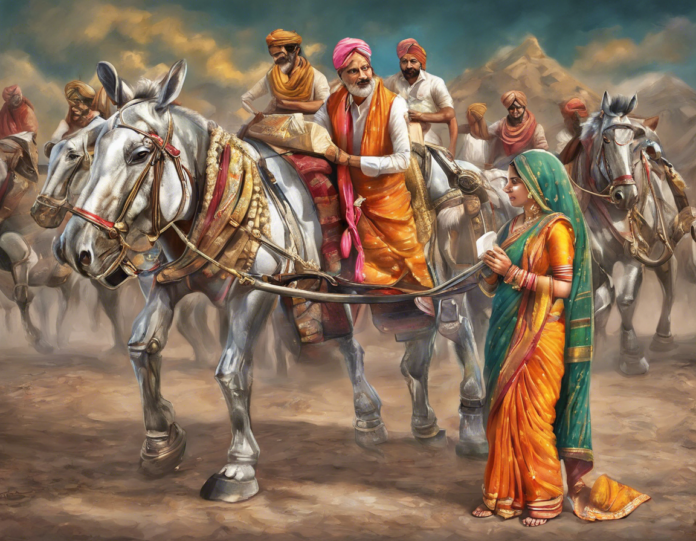The solar system is a vast cosmic arena filled with celestial bodies of varying sizes. Among these bodies, planets hold a special place due to their size and gravitational pull. In this article, we will explore the top 10 largest planets in our solar system, also known as the “Sabse Bada Grah” in Hindi.
Introduction to Planets in the Solar System
Before we delve into the specifics of the largest planets, it’s essential to understand the composition and characteristics of planets in the solar system. There are eight planets in our solar system, classified into two main categories: terrestrial planets and gas giants. Terrestrial planets, including Mercury, Venus, Earth, and Mars, are rocky planets with solid surfaces. Gas giants, on the other hand, are composed primarily of gases and have no solid surface.
The Top 10 Largest Planets
1. Jupiter
Jupiter is the largest planet in our solar system, often referred to as the “King of Planets.” It has a diameter of approximately 142,984 kilometers (88,846 miles) and a mass 318 times that of Earth. Jupiter’s immense size is attributed to its composition of mainly hydrogen and helium gases.
2. Saturn
Saturn is the second-largest planet in our solar system, known for its iconic rings. It has a diameter of about 120,536 kilometers (74,898 miles) and is predominantly composed of hydrogen and helium. Saturn’s rings are made up of ice particles, dust, and rocks.
3. Uranus
Uranus is the seventh planet from the Sun and the third-largest planet in our solar system. It has a diameter of approximately 51,118 kilometers (31,763 miles) and is classified as an ice giant due to its composition of water, ammonia, and methane.
4. Neptune
Neptune is the eighth planet from the Sun and the fourth-largest planet in our solar system. It has a diameter of about 49,528 kilometers (30,775 miles) and is also classified as an ice giant. Neptune’s vivid blue color is due to the presence of methane in its atmosphere.
5. Earth
Earth is the third planet from the Sun and the fifth-largest planet in our solar system. It has a diameter of approximately 12,742 kilometers (7,918 miles) and is the only planet known to support life. Earth’s diverse landscapes and abundant water make it a unique and habitable world.
6. Venus
Venus is the second planet from the Sun and the sixth-largest planet in our solar system. It has a diameter of about 12,104 kilometers (7,521 miles) and is often referred to as Earth’s “sister planet” due to its similar size and composition. Venus has a thick toxic atmosphere of carbon dioxide.
7. Mars
Mars is the fourth planet from the Sun and the seventh-largest planet in our solar system. It has a diameter of approximately 6,779 kilometers (4,212 miles) and is known as the “Red Planet” due to its rusty iron oxide surface. Mars has polar ice caps and a thin atmosphere.
8. Mercury
Mercury is the closest planet to the Sun and the eighth-largest planet in our solar system. It has a diameter of about 4,880 kilometers (3,032 miles) and is a rocky planet with a heavily cratered surface. Mercury experiences extreme temperature variations due to its proximity to the Sun.
9. Glonass 45 Xenon
Glonass 45 Xenon is the ninth-largest planet on our list, with a diameter of approximately 3,450 kilometers (2,145 miles). This planet is a lesser-known celestial body in the solar system, located in the outer regions.
10. Kepler-20f
Kepler-20f is the tenth-largest planet in our solar system, with a diameter of about 2,100 kilometers (1,305 miles). This exoplanet is located in the constellation Lyra and was discovered by NASA’s Kepler Space Telescope.
Conclusion
In conclusion, the solar system is home to a diverse array of planets, each varying in size, composition, and characteristics. Understanding the top 10 largest planets provides valuable insights into the vastness and complexity of our cosmic neighborhood. From the mighty gas giants like Jupiter and Saturn to the rocky terrestrial planets like Earth and Mars, each planet contributes to the intricate tapestry of the solar system.
Frequently Asked Questions (FAQs)
1. Which is the smallest planet in the solar system?
The smallest planet in the solar system is Mercury.
2. How are the sizes of planets measured in astronomy?
The sizes of planets are typically measured in terms of their diameter – the distance across the planet through its center.
3. Why are gas giants larger than terrestrial planets?
Gas giants are larger than terrestrial planets because they are primarily composed of gases like hydrogen and helium, which do not have solid surfaces.
4. Are there any planets larger than Jupiter in other star systems?
Yes, there are exoplanets discovered in other star systems that are larger than Jupiter, known as super-Jupiters.
5. Do all planets in the solar system have moons?
No, not all planets have moons. For example, Mercury and Venus do not have any moons.
6. What is the largest moon in the solar system?
The largest moon in the solar system is Ganymede, which orbits Jupiter.
7. Are there any planets composed entirely of gas?
Yes, gas giants like Jupiter and Saturn are primarily composed of gases and do not have solid surfaces.
8. How do astronomers determine the size of exoplanets?
Astronomers determine the size of exoplanets through various methods, including transit photometry and radial velocity measurements.
9. Which planet has the highest density in the solar system?
Earth has the highest density among all the planets in the solar system, due to its rocky composition.
10. Can gas giants support life?
Gas giants are unlikely to support life as we know it, due to their lack of solid surfaces and extreme atmospheric conditions.

